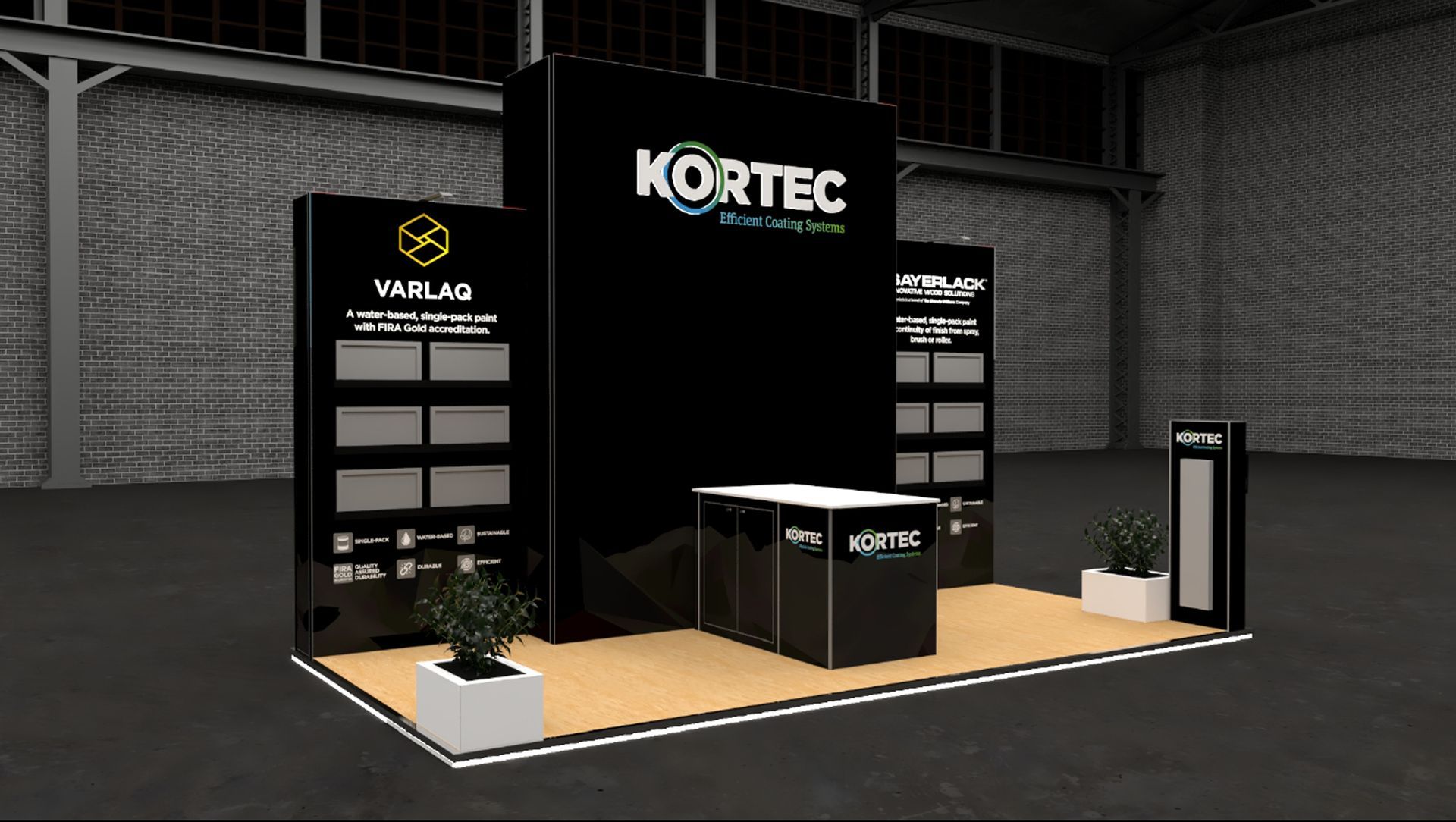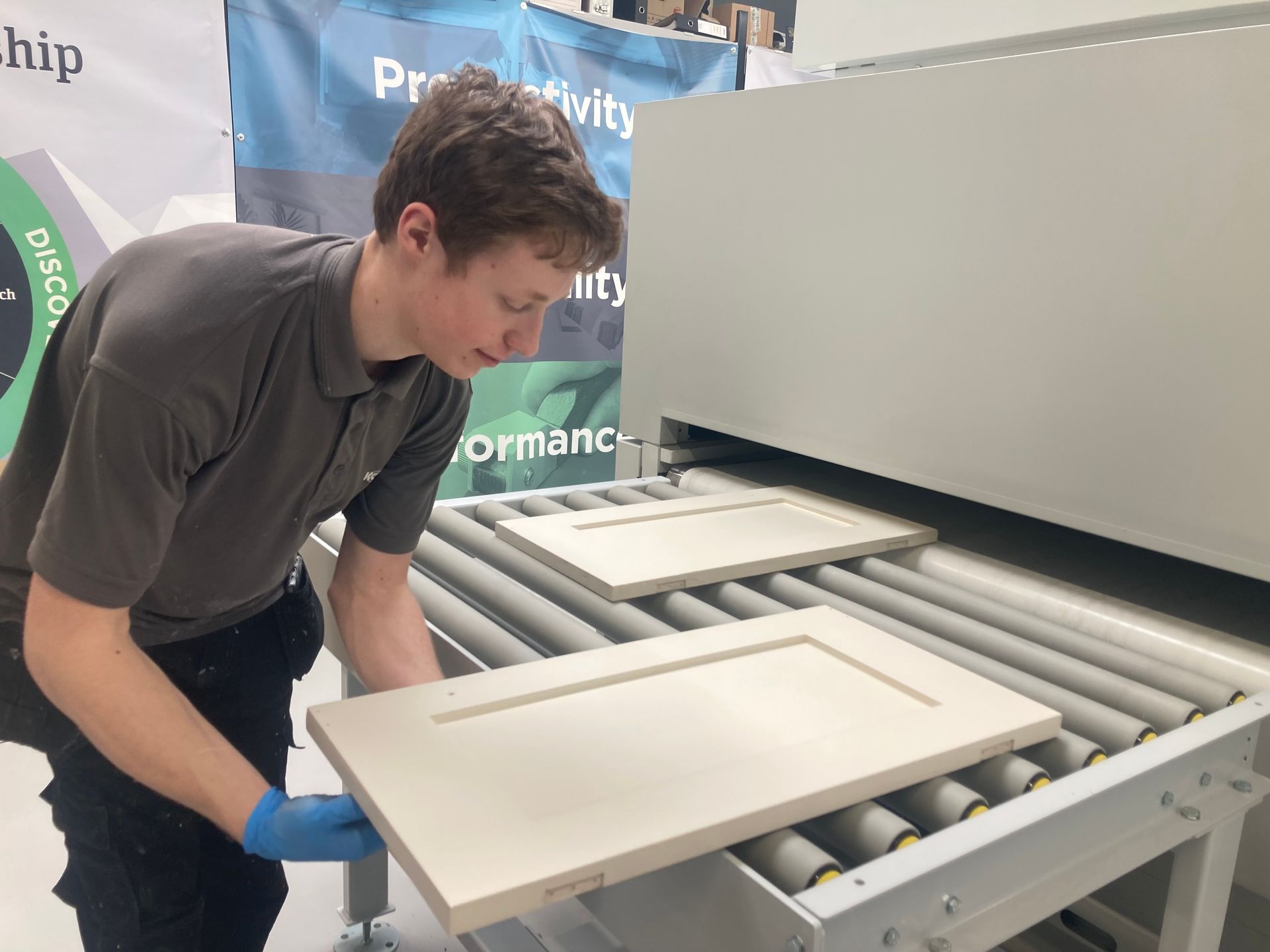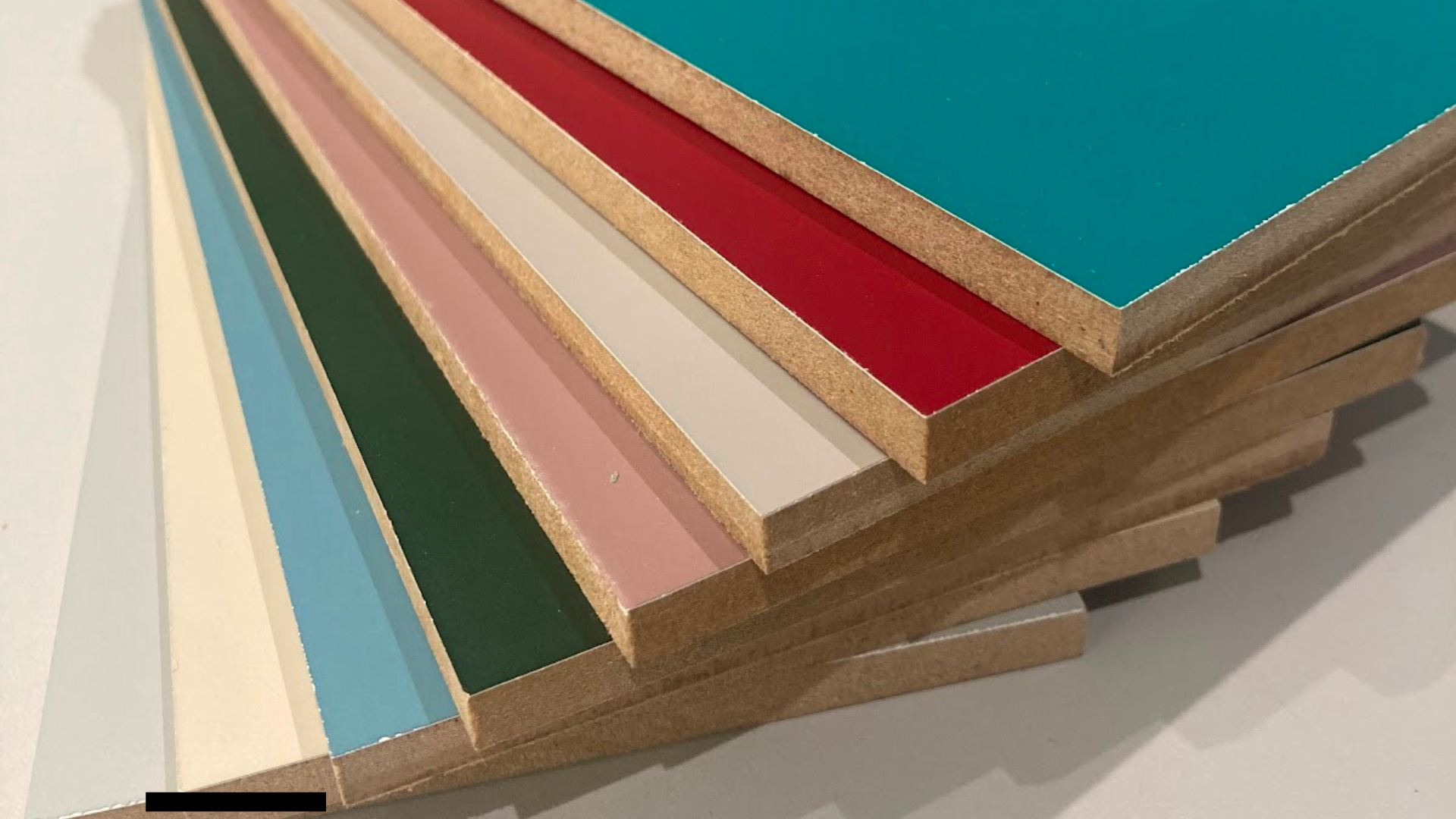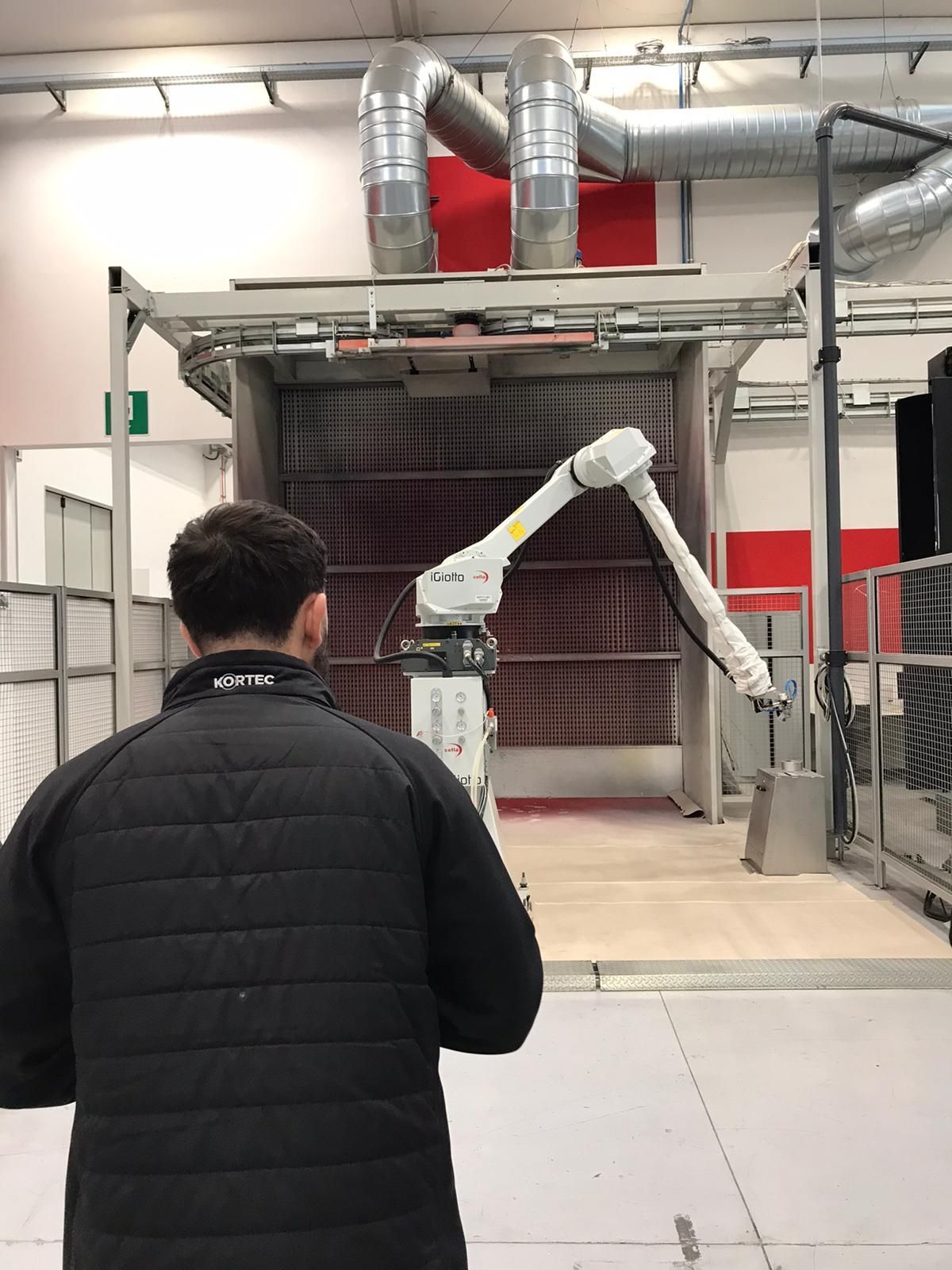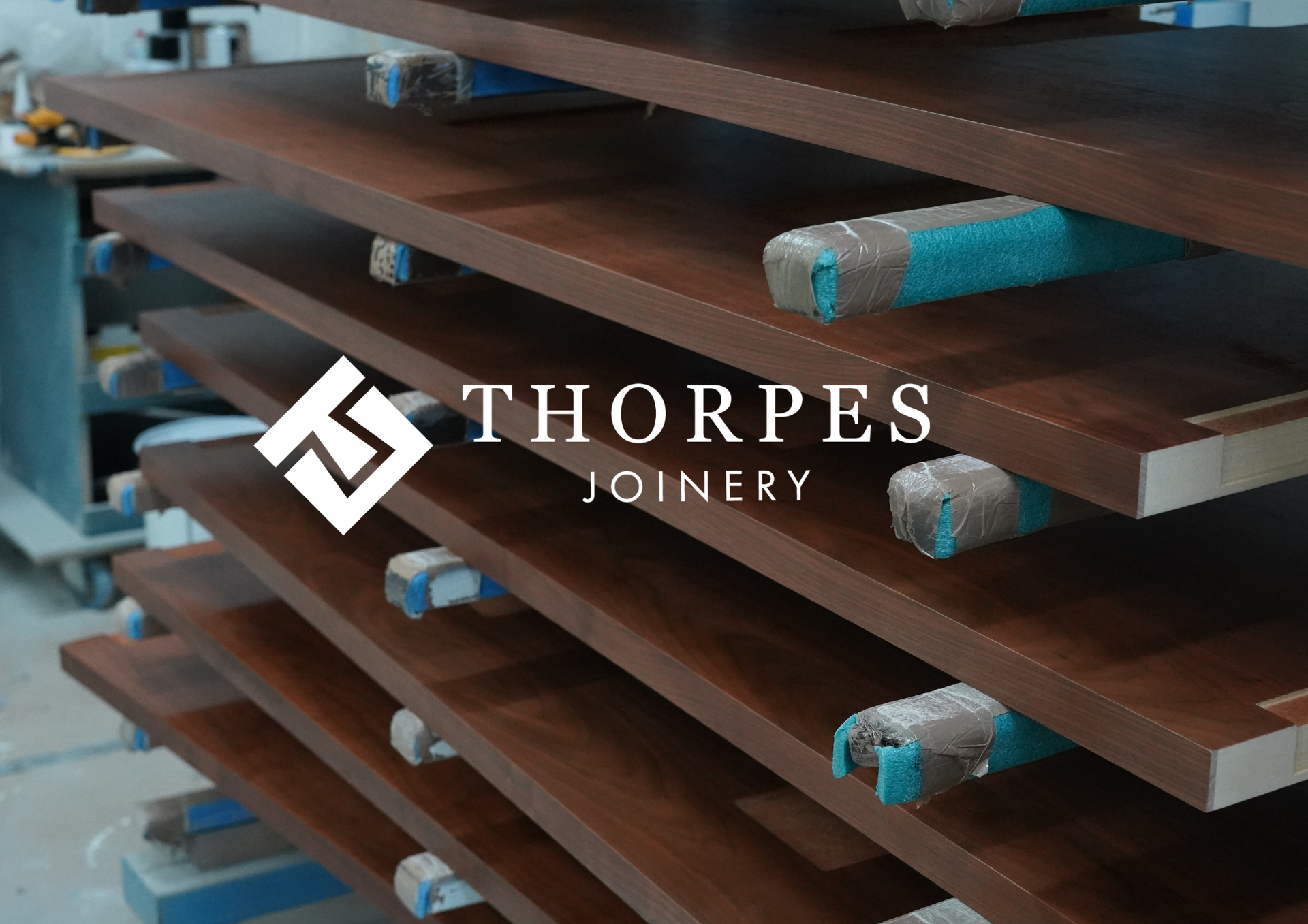Top Obstacles to Consistent Colour
Top Obstacles to Consistent Colour
Consistent paint colour is essential for virtually every painting process – the two main scenarios are:
- mass production where items from different runs may end up being mixed in a final unit e.g. kitchen doors
- bespoke production where the paint requirement can be hard to estimate (or the original size is extended) meaning extra paint is required
In order to ensure best colour consistency, there are a number of variables to closely consider, in order to be aware of and mitigate their effect as far as possible.
Below are a few examples of the common obstacles we come across, and what can be done to try overcome these.
Water-based or Solvent-based?
This is a key starting point - are you using water-based or solvent-based paints? If it is solvent based, once tinted the colour is normally quite stable immediately. On the other hand, water-based paints can experience significant colour shifts in the can for up to 72 hours from the time it was originally tinted - this is due to how the pigments absorb into the base paint.
Depending on the tolerance you need to work to this may not be a problem and therefore next day colour matching of water-based products will still be a viable option. However, if you need a colour variance of less than Delta 0.3, at least 72 hours will need to be allowed between tinting and delivery.
Batch variations
A common problem that paint applicators have is ensuring consistency between different batches of paint. As with many other manufactured products, changing from one batch to another does open up some extra variables. From one batch to the next, the balance of the base paint itself and the tinters used may be slightly different - the raw material colour can vary very slightly, the base paint gloss could be 0.5% different (which effects the perceived colour) and so on.
As above, these are quite minor differences that often wouldn’t be picked up by the human eye. However, if it is an extremely tight tolerance you are working too, these things do need to be considered. Where possible, make sure you
order enough paint to fulfil the job. If you do find you need more, ensure you communicate with your paint supplier that this is to continue a job, to ensure they’re working to the last produced batch as closely as possible.
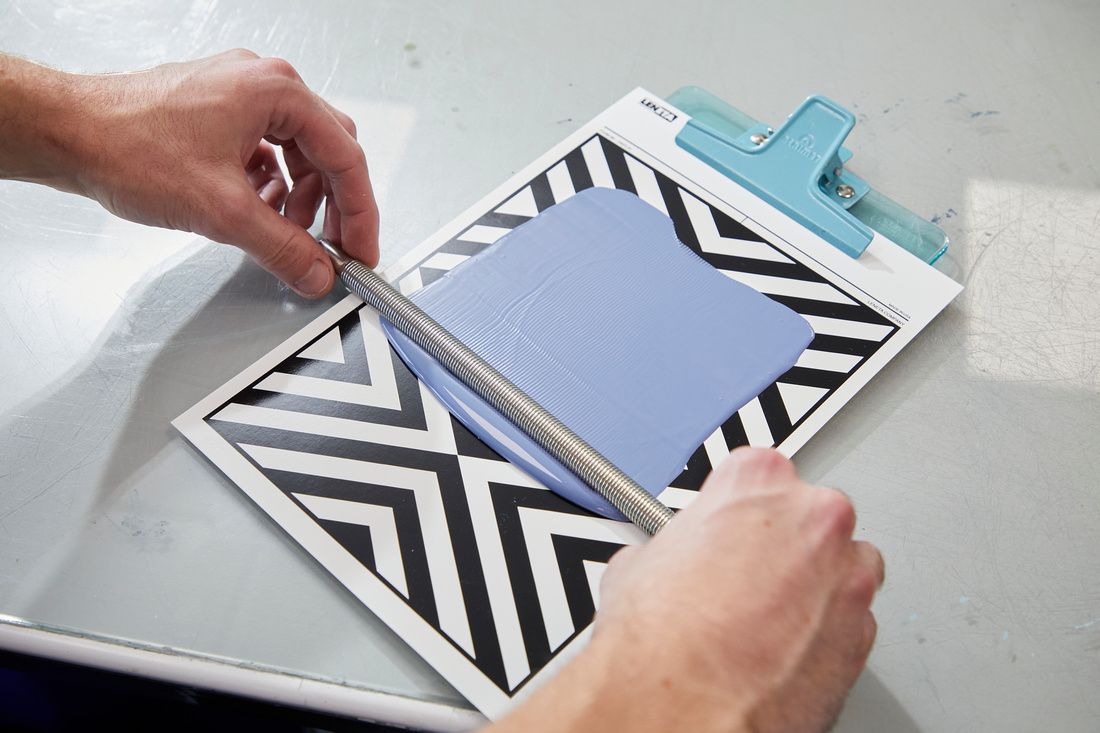
Readers Also Liked: 'How Long Does a Colour Match Take?'
Application and substrate
As you probably know, colour is perceived by light reflecting from the surface to our eyes - that means that anything which affects that reflectance does affect the colour!
Application is relevant here as it can change how the paint lies; how “flat” it is, “orange peel”, gloss etc. This is affected by temperature, dilution, the equipment used and the technique of the sprayer, so can produce significant variations.
The substrate can have the same effects – whether from MDF to a foil-wrapped door, shot-blasted to wire-brushed steel, or even high-quality MDF to a cheaper one. Unless it is a very heavy coating, the profile and absorbency of the substrate can change the finished appearance of the coating slightly, and therefore have an impact on the perceived colour.
Lighting
Lighting is absolutely critical to considering colour – it can’t be overstated how much impact this has. Depending on the specific industry in which you are serving, this is certainly something that needs taking into consideration. For example, something that is going into showroom lighting will look very different in that lighting compared to if it was going in natural daylight. It is worth asking your client what type of lighting will typically be used in situ, so this is something you can take into consideration when requesting your paint match.
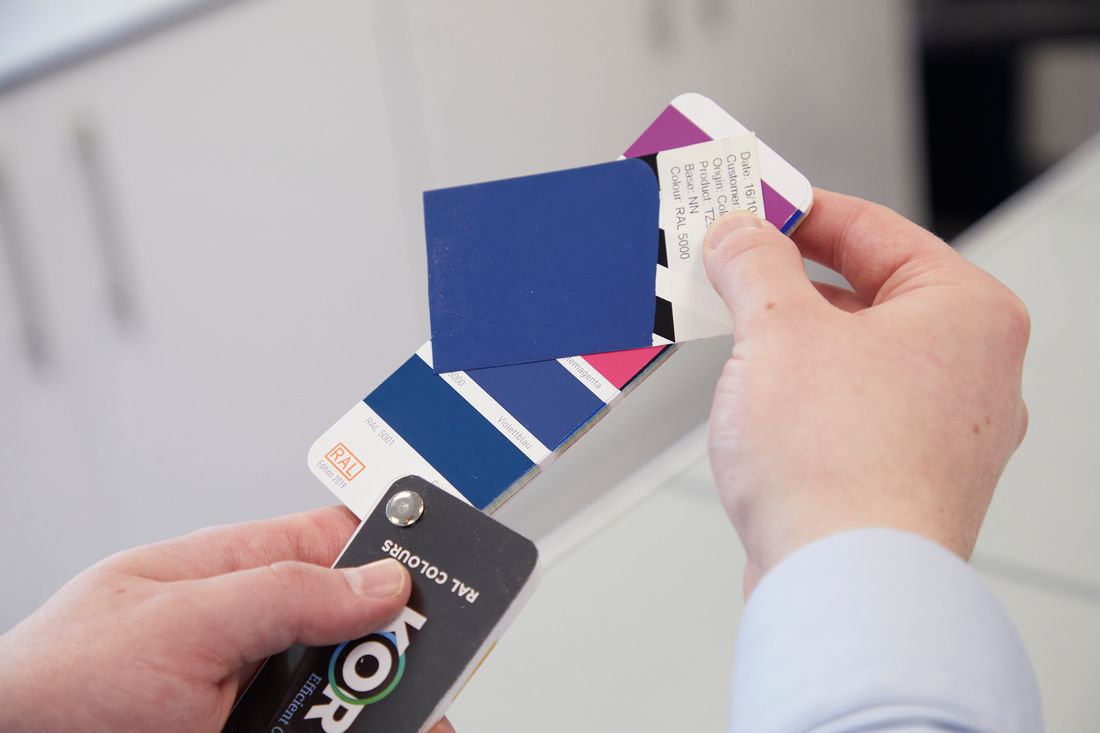
Colour charts
If your inspiration for colour comes from one of the many colour charts that are available to choose from, you have to consider the differences in types of coating (or printing!) used on the chart vs whatever the item is that you need to finish. In some colour chart sample books, this can range from a very low gloss decorative emulsion coating, to a high sheen ink print. If you then want a kitchen spraying in an industrial matt coating, the difference in sheen level and resins will result in a difference in colour interpretation that can be quite significant, simply due to the slightly higher sheen level and the light refraction that occurs.
As an additional difficulty, domestic/DIY-type charts are often produced with minimal controls. This can mean there are very noticeable differences between one colour chart to the next, meaning a certain tolerance does always have to be considered when it comes to this scenario. This is particularly the case when charts are reproduced yearly to update the range etc – the same colour in last year’s chart and this year’s can be quite different!
A final point on this – even highly-controlled charts such as RAL, NCS etc can shift over time, particularly with exposure to sunlight. This is particularly the case with printed wall charts – they are rarely high-quality representations even initially, and after some months will shift so far they are useless for colour comparisons.
In conclusion
The above list some of the big variables to consider when trying to ensure consistent colour. As mentioned, a lot of these would not be a variance that you would necessarily pick up with the human eye, but if there is a cumulative effect of several variations or you have a very tight tolerance then there could be an issue. However, awareness of these will provide a basis for educating the end client of the factors to consider when evaluating their painted finish.
Stay In The Loop
Receive Regular Newsletters Straight To Your Inbox
Be the first to receive all the latest articles, tips, tricks, quizzes, calculators, industry advice & news that will land straight into your email inbox!
Contact Us
We will get back to you as soon as possible.
Please try again later.
Book A FREE Discover Session
Take The Next Step Towards Improving Your Coating Processes
Discover the potential to optimise your finishing for maximum efficiency.

Increase Your Productivity

Improve Your Profitability

Enhance Your Performance

Increase Your
Productivity

Improve Your
Profitability

Enhance Your
Performance

When it comes to coating systems, you can’t afford to take chances.
Kortec’s approach is
tested and proven to work.
